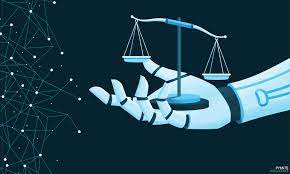Throughout the 2014 Ebola outbreak, governments generally dismissed the World Health Organization ( WHO ) prescribed steps and intervened in the fight against the epidemic.
Yerram Geetha, 1 sept 2020
The public health crisis and the World Health Organization
Globalization is promoting the propagation of pathogens worldwide. Ebola in Western Africa lately, and Zika in Latin America and the Caribbean have given rise to concerns in countries well away from the affected region. To combat illnesses the international community depends on the World Health Organization (WHO). The WHO is charged with ensuring the highest level of wellbeing possible for all peoples (Art. 1 WHO-Constitution). Even tough legislation does not make anyone safer by itself, the WHO has any legal means at hand to operate in that direction. While some of the means at hand are quite common or even uncomfortable, WHO-law provides one very unique feature. The WHO has authority to enforce legally binding rules (Article 21 of the WHO Constitution). The key is the entry-in law: a convention adopted under this clause shall enter into force for all members after its ratification has been given due notice (Article 22 of the WHO Constitution). The only way a state can opt out of such a binding agreement is to notify WHO’s Director-General of the state ‘s refusal or reservation.
The WHO Guidelines on Public Nutrition
That is the legal basis for the 2005 International Health Regulations (IHR), which came into effect in 2007. The aim is to “prevent, defend, monitor and provide” a response to any “international public health emergency” (Art. 2 IHR, PHEIC). The IHR is motivated by the principle of “avoiding undue conflict with international traffic and trade.”
Both Ebola in 2014 and Zika in 2016 were known as PHEIC: they were recognized as exceptional occurrences that present a public health danger to other states by the transmission of diseases globally and could involve a concerted international response (Article 1 IHR)
The Director-General of the WHO can give temporary recommendations during a PHEIC. Because of their nature as “non-binding guidance” (Art. 1 IHR), however, states generally dismissed certain provisional guidelines given during the Ebola crisis with disastrous consequences.
To take a simple approach: to change the IHR
Naturally the best approach is to change the IHR. For the degree that provisional guidelines are described as “binding” steps, only one term has to be chopped: Art. 1 IHR may be amended. However, this approach appears to be out of the question in light of recent state history. It is also best to consider steps that are less detrimental to State sovereignty.
A winding approach: an overview of the IHR
State parties are usually not prohibited from introducing further health interventions (Art. 43 [1] IHR). The IHR, however, is very clear: such additional interventions should not be more restrictive on international traffic and not more invasive on individuals than alternatives that are fairly available to achieve the required level of health security. When a state wishes to take further steps, the state must send relevant details to the WHO. In addition, the WHO is reviewing these steps and may ask the state to rethink its plans. When a state decides to take steps counter to current provisional guidelines, those actions would contravene the provision set out at the conclusion of Art. 43(1). Nevertheless, such national laws remain in effect under international law; the IHR can not annul such state policy. Now, the State is obliged to announce these measures under a convention. This condition could also nudge the State to obey the temporary advice. To be perfectly clear: It is not in any way a tool for law enforcement; it will only operate for political purposes.
Sophisticated movements: Civil rights legislation as a mechanism
Unfortunately, in the war against Ebola the universal right to safety has not played any part. Nevertheless, using human rights legislation as a guide and maintaining consistency with the IHR and interim guidelines, could be the most systematic solution. The methodology is based on a variety of pillars. Secondly, Article 12(1) of the International Covenant on Political , Social and Cultural Rights (ICESCR) does not include a right to total fitness, but stipulates a significantly lower goal to “enjoy the highest possible level of physical and mental safety.” Article 12(2) ICESCR calls for several steps to be taken by States Parties in order to ensure the complete fulfilment of that right. Among such is the duty of the State parties to refrain from intervening with this right directly or indirectly, and to provide foreign support and cooperation. In addition to bilateral and multilateral collaboration through the WHO, it is also the responsibility of the UN General Assembly to facilitate international cooperation in the field of health. International cooperation is important particularly with PHEICs. Despite a concerted commitment it would not deter the worldwide spread of diseases.
Second, there is no provision in the ICESCR which specifies the rational loci of applicability. Only in the jurisdiction of a State Party may one appeal for applicability. For all, delivering health services alone within a State is hard enough. If a State can not provide people on its territories with total safety, how can a State accomplish this aim outside?
The definition, however, falls short of the law of the Treaty. Art. 2 [1] ICESCR does not specifically restrict the extent of operation of the ICESCR, at all. However, this section contains an agreement to include mutual assistance and cooperation. States should not hamper attempts by other players to achieve safety by being bound by a contractual agreement to provide assistance. Bearing in mind that these steps are taken (and enforced) on the territories of the Government, there is an duty not to intervene, at least, with the provisional guidelines provided by the Director-General of the WHO. So be specific, this does not imply the ICESCR’s extraterritorial applicability but applies to the steps taken on the respective state’s territory. By comparison, implementing these steps will lead to the opposite outcome, because the state not only does not provide international assistance, but is hindering international assistance in the form of measures suggested by the WHO.
Despite all this, it is not as straightforward as it may sound to follow the human rights approach. The duty to make humanitarian aid is very weak and can be perceived differently. Furthermore, Article 2 of the ICESCR clearly does not allow for extraterritorial application and if one opts for the simple approach that such provision is appropriate to have extraterritorial jurisdiction, the approach suggested here does not gradually realize the human right to health. However, if one interprets the absence of any clear reference to the nature of the requirement as not restricting the requirement of the ICESCR (as opposed to Art. 2 ICCPR), then the way forward suggested here might be compelling. Nonetheless, the duty to provide foreign assistance itself is very weak. This is a vague material, which can be perceived in several ways.
Conclusion:
In brief, the duty to slowly recognize the freedoms enshrined in the ICESCR in conjunction with other States as well as the requirement to help other States in their attempts to guarantee the universal right to health was ignored by the above measures taken in lieu of a provisional advice to the contrary.
Although updating the IHR may seem pointless, and pursuing a revolving path may not achieve the goal of providing “more protection,” a human rights-centric approach may be helpful in addressing global disease spread. After all, the duty to offer help to other States is at the same time a duty not to intervene with steps taken for that purpose by other States or the international community.




Leave feedback about this